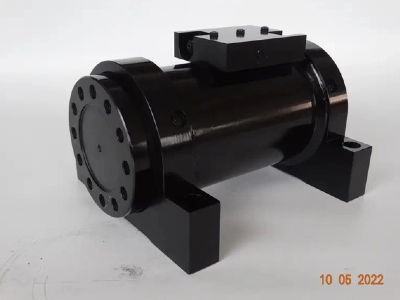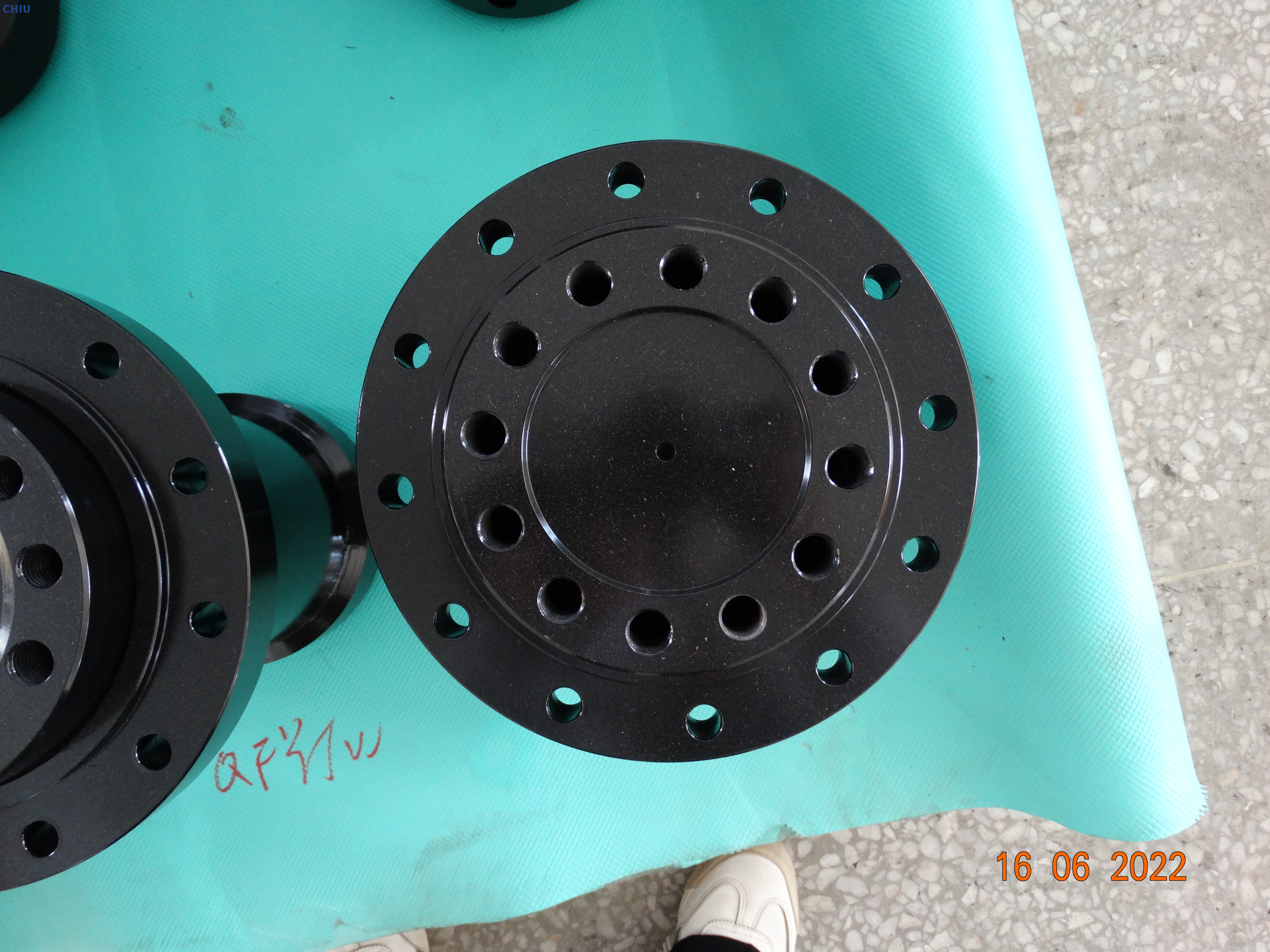- All
- Product Name
- Product Keyword
- Product Model
- Product Summary
- Product Description
- Multi Field Search
Views: 0 Author: Site Editor Publish Time: 2025-07-04 Origin: Site







In today’s demanding industrial landscape, heavy-duty machinery must deliver both immense power and unwavering reliability. Whether shifting multi-ton loads on a construction site, carving tunnels beneath city streets, or leveling earth for new infrastructure, equipment operators expect precision control under the harshest conditions. At the heart of many of these machines lies a deceptively simple—but critically important—component: the hydraulic rotary actuator.
By converting pressurized hydraulic fluid into controlled rotary motion, these actuators enable cranes, excavators, loaders, and tunnel-boring machines to perform smooth, accurate turns and adjustments with the high torque necessary for heavy loads. Unlike electric or pneumatic alternatives, hydraulic rotary actuators excel where space is limited, forces are extreme, and environmental conditions are unforgiving. In this article, we explore three flagship applications in the heavy machinery sector—crane and excavator slewing mechanisms, wheel loader and bulldozer bucket positioning, and tunnel boring machine (TBM) cutterhead orientation—and explain how hydraulic rotary actuators enhance safety, efficiency, and service life.
“Slewing” refers to the rotation of a machine’s upper structure—such as a crane’s boom or an excavator’s house—about its vertical axis. This motion is fundamental for positioning loads, aligning buckets, and coordinating movement between the upper and lower assemblies. Slewing drives must generate sufficient torque to rotate heavy superstructures, yet provide smooth acceleration, braking, and precise positioning.
Heavy-duty cranes and excavators can weigh tens or even hundreds of tons. To swing these masses safely, slewing drives incorporate large-bore hydraulic rotary actuators—often configured as vane-type or planetary-gear units—with torque ratings ranging from several kilonewton-meters (kNm) to thousands of kNm. Key design features include:
High-pressure chambers: By operating at pressures of 250 to 350 bar (or higher), actuators generate enormous force in a compact housing.
Integrated brake systems: Mechanical or hydraulic failsafe brakes hold the slew angle securely when hydraulic pressure drops or in an emergency shutdown, preventing uncontrolled rotation.
Multiple safety interlocks: Redundant pressure sensors and load-sensing valves monitor torque levels, automatically halting slewing if overload or pressure spikes occur.
These elements work together to ensure that once the operator slews the boom to the desired bearing, it stays put—no drift, no creep, no risk of sudden swings.
In dynamic environments—placing materials on a moving truck, loading debris from shifting terrain, or aligning with a narrow trench—slewing drives must react instantly to joystick commands. Hydraulic rotary actuators achieve this by:
Proportional control valves: Electronic signals modulate spool position to finely adjust flow rate and direction, delivering smooth start-stop transitions without jolts.
Hydraulic cushioning: Built-in damping in the vane or piston chambers reduces shock loads during rapid reversal, protecting linkages and bearings.
Closed-loop feedback: Rotary encoders on the actuator shaft provide real-time angular position data (often within ±0.1°), enabling micro-adjustments for pinpoint accuracy.
Together, these features let operators swing massive loads smoothly and precisely—crucial for preventing tipping, avoiding collisions, and meeting tight tolerances on job sites.

Wheel loaders and bulldozers move enormous volumes of material—earth, snow, gravel, or industrial debris—often in repetitive cycles. Small errors in bucket positioning translate to lost material, increased cycle times, and added fuel consumption. Hydraulic rotary actuators help maintain consistent bucket tilt and rollback angles, ensuring each scoop is full and each dump precise.
To maximize bucket fill rate and minimize spillage, actuators offer:
Adjustable stop angles: Programmable positions allow the machine’s ECU to automatically stop the bucket at an optimal 45° for digging or 25° for carrying, reducing operator fatigue and ensuring consistent load geometry.
Variable torque output: Sensors feed back instantaneous soil resistance data, enabling the actuator to boost torque during tough digs or relieve pressure to avoid stalling when material is unexpectedly dense.
Soft-stop and soft-start functions: Prevent abrupt movements that can launch material out of the bucket or shock drive components, preserving load accuracy and extending service life.
By automating these subtle angle adjustments, loaders and dozers can complete more cycles per hour—translating directly into higher productivity and lower operating costs.
Buckets frequently encounter hidden obstacles—rocks, rebar, or frozen ground—that can impart sudden impact loads. Hydraulic rotary actuators used in bucket linkages incorporate:
Reinforced housings: Steel-reinforced castings and chromed bores resist denting and wear.
Shock-absorbing mountings: Elastomeric bearings or hydraulic snubbers cushion kickback forces, preventing damage to the actuator’s internal vanes or pistons.
High-temperature seals: Specialized nitrile or fluorocarbon compounds maintain pressure integrity under heat generated by rapid cycling.
These rugged features ensure that actuators continue functioning accurately—cycle after cycle—even when confronted with the toughest materials and the most unforgiving work sites.
Modern TBMs excavate kilometers of tunnels for subways, highways, and utilities. The cutterhead—a rotating disc studded with cutting tools—must not only spin at high speed to break rock but also maintain precise angular alignment when mining in curved segments or steering through varying ground conditions. Misalignment can cause uneven wear on cutters, excessive thrust loads, and even deviation from the planned tunnel axis.
TBM actuators operate in wet, abrasive environments where groundwater seeps in and rock fragments permeate the hydraulic system. To stay operational for hundreds of meters between maintenance stops, actuators feature:
Multi-lip dynamic seals: Prevent ingress of slurry and maintain fluid cleanliness.
Ceramic or tungsten carbide plating: On pistons and cylinder walls to resist abrasion from fine rock particles.
Large fluid volumes and heat exchangers: Mitigate temperature spikes from continuous, high-torque operation, preserving seal life and fluid viscosity.
These adaptations ensure that cutterhead orientation remains precise and reliable, even as the TBM bores through mixed geology at depths where maintenance cranes cannot reach.
Given the cost of TBM downtime—often hundreds of thousands of dollars per day—actuator designs prioritize serviceability:
Modular cartridge design: Internal components can be swapped out in the tunnel, minimizing the need to remove the entire actuator housing.
On-board diagnostic ports: Allow mechanics to connect portable readers and assess seal wear, fluid contamination, and pressure curves in real time.
Redundant actuators: In critical steering units, dual actuators share load. If one fails, the other maintains control long enough for emergency retrieval or backup systems to engage.
Through these strategies, TBM operators keep tunneling on schedule, protect against costly stoppages, and ensure safe passage through complex subterranean environments.

From towering cranes to powerful excavators, from massive loaders to precision-steered tunnel boring machines, hydraulic rotary actuators provide the high torque, precise control, and rugged reliability essential for heavy-duty industrial applications. Their ability to deliver smooth, repeatable rotary motion under extreme pressures and variable loads makes them the preferred choice for OEMs and end users alike.
By integrating advanced proportional valves, real-time feedback sensors, reinforced materials, and service-friendly designs, modern hydraulic rotary actuators elevate productivity, reduce downtime, and enhance operator safety. For companies seeking to maximize machine performance in construction, mining, tunneling, and beyond, partnering with an experienced supplier—such as Changsha Chiyu Hydraulic Equipment Co., Ltd.—ensures access to tailored actuator solutions, global support networks, and the engineering expertise necessary to tackle the most demanding applications.
Explore Chiyu’s full range of heavy-duty hydraulic rotary actuators and discover how precision rotation can transform your next project: www.chiyu-hydraulics.com.